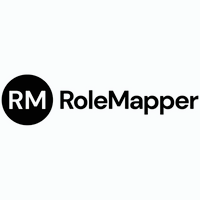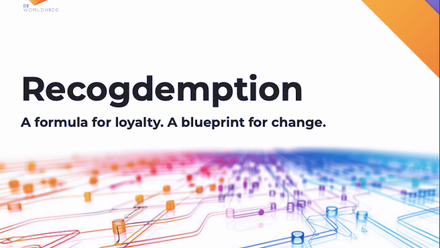Top tips to establish gender-neutral job evaluation for EU pay transparency
The EU Pay Transparency Directive is set to be fully implemented across member states in 2026 and represents a landmark initiative to address the persistent gender pay gap in the EU.
The gender pay gap within the EU currently stands at 12%, but with much variation among member states.
Gender-neutral job evaluation is at the heart of this directive, a critical tool for ensuring equal pay for equal work or work of equal value.
The directive states that “employers must have pay structures in place ensuring that there are no gender-based pay differences between workers performing the same work or work of equal value that are not justified based on objective, gender-neutral criteria.”
The directive doesn’t explicitly define what these gender-neutral criteria should be, but it does refer to four categories of objective criteria:
- Skills
- Effort
- Responsibility
- Working conditions
It also states that evaluation methods can include any other factors relevant to the specific job or position.
Historical issues with evaluation methods
Historically, many job evaluation systems have perpetuated pay disparities by undervaluing roles typically dominated by women, such as caregiving or administrative positions, while overvaluing roles traditionally associated with men, such as manual labour or technical jobs.
For example, traditional evaluation methods often assign disproportionate weight to factors such as physical strength, which can favour male-dominated roles, while overlooking critical skills such as mental and emotional effort, which are prevalent in female-dominated jobs.
This can result in female-dominated job roles being undervalued, such as:
- Caregiving roles: Jobs such as nursing or childcare often involve high levels of responsibility, emotional effort, and specialised knowledge. However, traditional job evaluation systems historically assigned less weight to these factors than physical effort or technical complexity.
- Administrative roles: Secretarial and administrative positions require significant organisational skills, problem-solving abilities, and multitasking. Despite this, job evaluation methods often undervalued these roles, leading to lower pay grades.
This systemic undervaluation contributed to the gender pay gap by creating disparities in how male-dominated and female-dominated roles were rewarded.
Therefore, reward teams must ensure that job evaluation frameworks do not inadvertently perpetuate historical biases.
This should include a critical review of all factors and weightings used in job evaluation.
Selecting gender-neutral evaluation methods
To effectively implement gender-neutral job evaluation, organisations must focus on several critical components:
- Objective criteria: As mentioned above, evaluation methods should rely on measurable factors like skills, effort, responsibility, and working conditions rather than subjective judgments
- Elimination of bias: Organisations must actively identify and remove any gender-based assumptions that can be embedded in traditional job evaluation systems
- Regular reviews: Evaluation methods should be periodically updated to reflect changes in societal norms and workplace dynamics
- Analytical approaches: Structured methods like point-factor analysis allow for systematic comparison across roles and minimise discrimination compared to informal or market-driven approaches
The more analytical approaches to job evaluation referenced in the last component should enable the position of a job to be established in relation to another in a sector or organisation, regardless of gender.
Analytical job evaluation methods, such as the point factor method, are more systematic and complex than other more informal, market-driven approaches and have the potential to be less discriminatory.
Therefore, they are considered to be most appropriate for job evaluation in a gender equality context.
For reward teams, adopting analytical job evaluation methods not only supports compliance, but also provides a robust foundation for pay equity analysis, pay structure design and pay progression frameworks.
Future-proofing job evaluation
It’s possible that the EU may take a more prescriptive approach to job evaluation in future.
Article 4 states that ‘Where appropriate, the Commission may update Union-wide guidelines related to gender-neutral job evaluation and classification systems, in consultation with the European Institute for Gender Equality (EIGE).’
In advance of any further guidance, organisations need to determine an approach to job evaluation that:
- Is structured so that it is objective and bias-free as possible
- Uses objective, gender free criteria (ideally skills, effort, responsibility, working conditions and any other criteria that can be justified)
- Has dimensions or levels for each of the criteria
Specifically, regarding dimensions or levels for each of the criteria, the recommendation of the directive is that organisations use or develop a job evaluation or job classification method which has dimensions or levels for each of the criteria that are used.
In summary
The EU's recommendation regarding pay transparency is that a structured job evaluation based on objective, gender-neutral criteria be used.
However, many companies are not currently using structured job evaluation methodologies, with many using market pricing as the primary method of assessing the relative value of jobs within their organisation.
Given the requirement to show employee pay levels for jobs of the same value, valuing jobs based on market pricing alone can be fraught with challenges.
Organisations with employees in the EU may need to assess whether their approach and adoption of job evaluation is sufficient, robust, and unbiased enough to enable compliance with the new directive and mitigate ongoing risk exposure.
For more on EU pay transparency, download our guide: A Roadmap to Prepare for the EU Pay Transparency Directive.
Supplied by REBA Associate Member, RoleMapper
RoleMapper is an AI-powered job data transformation and management platform.








